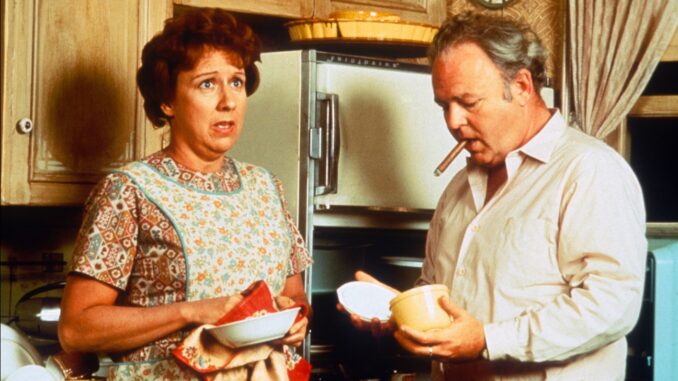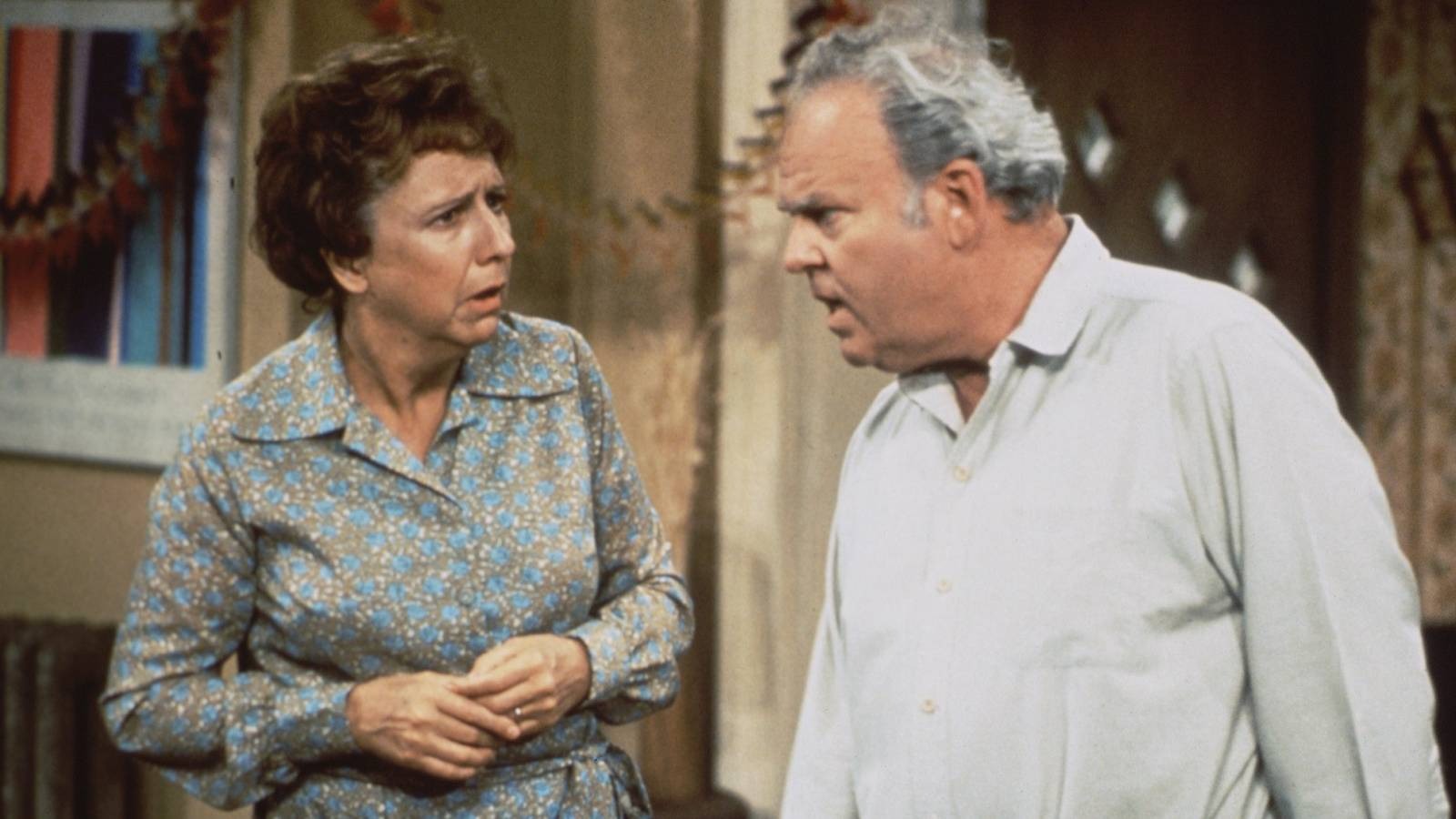
Few sitcoms have ever changed the face of television quite like All in the Family. From its fearless tackling of taboo topics to its unforgettable characters, this Norman Lear masterpiece didn’t just entertain — it sparked conversations that reshaped America. Whether you’re a lifelong fan or just discovering this iconic series, these 16 cutting-edge facts will give you a brand-new appreciation for one of TV’s boldest shows.
1. “All in the Family” Almost Never Made It to Air
Before becoming a hit, All in the Family was rejected by multiple networks. Executives were nervous about its controversial themes — racism, sexism, and politics were not exactly “TV-safe” topics in the early 1970s. But Norman Lear refused to back down, determined to make a show that reflected real America.
2. Archie Bunker Was Inspired by Norman Lear’s Own Father
Carroll O’Connor’s legendary character, Archie Bunker, wasn’t pure fiction. Lear based him on his own dad — a man with strong, often outdated opinions but a strangely lovable heart. That authenticity made Archie relatable, even when he was offensive.
3. The Show Was a Remake of a British Sitcom
Believe it or not, All in the Family was adapted from the UK series Till Death Us Do Part. Both shows centered on a politically conservative working-class man constantly clashing with his liberal son-in-law — proof that family debates are universal!
4. Carroll O’Connor Almost Quit Before the Show Aired
O’Connor initially thought the show wouldn’t last more than six episodes. He even demanded his contract allow him to return to Europe if it failed. Ironically, he became one of the most recognized faces on American television.
5. The Famous Theme Song Was Recorded Live
You might think the opening song, “Those Were the Days,” was pre-recorded in a studio. Nope! Carroll O’Connor and Jean Stapleton performed it live at the piano before each episode’s taping — adding to the show’s charm and authenticity.
6. It Was the First Sitcom to Feature the Sound of a Flushing Toilet

As simple as it sounds, this was groundbreaking. In the early ‘70s, even mentioning bathrooms was taboo. All in the Family broke that barrier — one flush at a time — showing America that comedy could also be real life.
7. The Bunker House Was Based on a Real Queens Neighborhood
The Bunkers’ home at 704 Hauser Street might look like any blue-collar house, but it was modeled after a real Queens, New York residence. Fans have even made pilgrimages to the actual location, making it a cultural landmark.
8. Jean Stapleton Almost Didn’t Play Edith
Jean Stapleton wasn’t the first choice for Edith Bunker. Producers initially wanted a “sharper” housewife character. Thankfully, Stapleton brought warmth and innocence that balanced Archie’s rough edges — creating one of TV’s most iconic duos.
9. The Show Was Controversial — and Proud of It
From racial slurs to political debates, All in the Family pulled no punches. Lear wanted viewers to feel uncomfortable — and then think. Many critics initially slammed the show, but audiences quickly realized its brilliance.
10. It Won an Unprecedented Number of Emmy Awards
All in the Family racked up 22 Emmy Awards, including four for Outstanding Comedy Series. Its success paved the way for smarter, bolder sitcoms that followed — from The Jeffersons to Maude and beyond.
11. The Jeffersons Got Their Start on the Show
Before moving on up, George and Louise Jefferson were the Bunkers’ neighbors. Their spin-off, The Jeffersons, became one of the most successful shows in history — proving that All in the Family’s influence reached far beyond its own episodes.
12. Norman Lear Changed Television Forever
Norman Lear’s vision wasn’t just to make people laugh. He wanted to use television as a mirror — reflecting society’s strengths and flaws. Through Archie, Edith, and the Stivics, Lear forced America to confront its own prejudices, one laugh at a time.
13. Carroll O’Connor and Rob Reiner Had Real Tension Off-Screen
Archie and Mike “Meathead” Stivic’s on-screen clashes often mirrored reality. O’Connor and Reiner had strong political opinions — and they didn’t always align. Yet, their mutual respect as actors made their chemistry electric.
14. The Show’s Final Episode Was Bittersweet
After nine seasons, All in the Family ended in 1979 with Edith’s health declining and Archie facing an uncertain future. The emotional farewell set up the spinoff Archie Bunker’s Place, where fans saw a more vulnerable side of the character.
15. It Was Filmed in Front of a Live Studio Audience
Every laugh, gasp, and groan you hear came from real people. The live audience added authenticity — and sometimes, even the actors were surprised by the reactions. That energy made All in the Family feel like theater, not just television.
16. Its Legacy Still Shapes Sitcoms Today
From The Simpsons to Family Guy to Modern Family, every show that dares to mix humor with hard truths owes something to All in the Family. It proved that laughter and social commentary could coexist — and thrive.
Why “All in the Family” Still Matters Today
Even decades later, the show’s themes — intolerance, generational conflict, political polarization — remain just as relevant. In many ways, All in the Family predicted today’s cultural debates. It dared to show that humor isn’t just for escape — it’s for understanding.
Watching it now feels like a history lesson wrapped in laughter. It reminds us that people, no matter how flawed, can grow — and that change starts in conversations, even uncomfortable ones, around the family dinner table.
Conclusion
All in the Family wasn’t just a sitcom — it was a social revolution broadcast into America’s living rooms. Its courage to confront tough topics, mixed with humor and heart, changed what television could be. From Archie’s grumbles to Edith’s sweetness, every episode pushed boundaries while keeping audiences laughing. Decades later, its impact still resonates — proof that great storytelling never ages.
